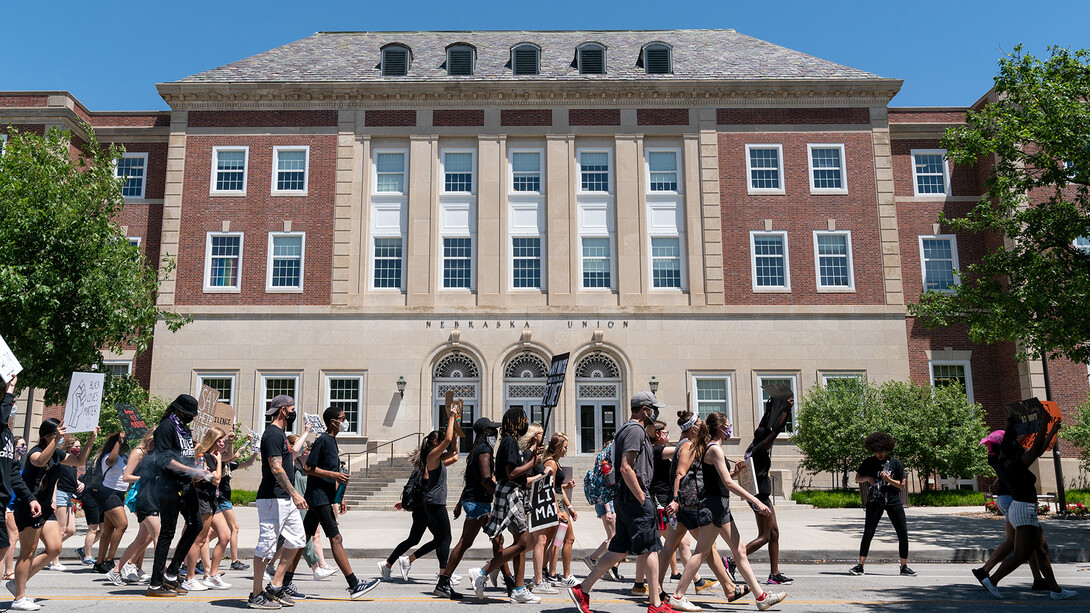
Exploring diversity and inclusion has been part of Joe Starita’s syllabus for the last 20 years of his career.
However, that personal commitment was sharpened during one of his classes in the fall semester of 2013, when a student stood in front of her peers and explained her experience as a Black woman in Lincoln.
As she told her story of being racially profiled every time she entered a store, some of her white classmates, who shared the same love of shopping, shed tears. The white students’ experiences differed greatly from the story they were hearing, and it impacted each student in the class. Starita knew something needed to be done.
The experience moved the University of Nebraska–Lincoln professor of journalism and mass communication to create a course, “Being Black in Lincoln,” that is intended to shed light on the reality the Black experience in Nebraska’s capital city. Launched this spring, the class includes 15 hand-picked students who will write a dozen profiles on Black residents of Lincoln. Ultimately, the stories will be published in the Lincoln Journal Star.

Starita and Jennifer Sheppard, assistant professor of practice of journalism, spent a lot of time not only putting together a very specific syllabus drawn from the entire university, but also choosing the students who would be in the class.
The process started with each student filling out an application and writing a 500-word essay on why they wanted to be part of this opportunity.
“The bar was set pretty high on those essays,” Starita said. “They had to convince us that we should take them (into the class) and we were flabbergasted by the energy, the insight, the smarts and how clean the writing was in the essays among those we ultimately selected.”

From all the applications, 15 students differing in race, ethnicity and gender were chosen.
“We are taking 15 students and harnessing their passion and awareness of social justice issues, and teaching them how to be a journalist,” Sheppard said.
Meyri Ibrahim, a sophomore double major in journalism and political science from Eagan, Minnesota, is excited for the opportunity to improve her journalism skills and get involved with the Lincoln community.
“It’s really important (to tell these stories) especially now with the way the climate has changed around the discourse of Black lives,” Ibrahim said. “People are listening now more than ever.”
Highlighting the Black experience is the core of the class. With Lincoln being a predominately white community, most residents have not experienced the isolation that can come from being a person of color. Black citizens have overcome obstacles that their white counterparts don’t encounter, and the purpose of these profiles is to shed light on these stories and these issues.
“This is what good journalism does,” Starita said. “It holds a mirror up to the community and lets the community see itself in that mirror, and it’s not fake, it’s not staged. What they see in the mirror is reality.”
Both Starita and Sheppard are hoping that these students end this class with a new sense of empowerment and courage.
“They need an outlet,” Sheppard said. “Especially women of color and people of color, they are angry, they’re sad, they’re frustrated, they’re isolated now with COVID and they need an outlet. I feel like giving them a purpose through journalism will be therapeutic for them and encourage them to not be afraid of confronting these issues.”
The best part of this project, Starita said, is that everyone wins. The students win because they get to do something they are so passionate about while learning and growing at the same time. Starita and Sheppard win because they are surrounded by these passionate students. But, the big winners are the citizens of Lincoln who get to read about a Lincoln they aren’t used to. The hope is that this will raise the racial justice IQ.
“Black students (at the university) haven’t always felt heard or represented,” Ibrahim said. “That’s something that I really strive to help close that barrier within campus.”
Dillon Galloway, a freshman advertising and public relations and journalism double major, believes the profiles will inspire young people in the Lincoln community.
“I really hope the Lincoln community just sees the amount of diversity and different positions that Black people have in the community,” Galloway said. “The profiles we have each come from different fields ranging from police officer to school teacher and hopefully it inspires young Black people.”
The success of the project lies in the community response. Sheppard hopes these profiles will lead Lincoln to become the center of social justice reckoning.
“The truth is important more so now than at any point in my lifetime,” Starita said. “If we can get the next generation of leaders and citizens who are going to run this country to understand and show them how facts matter, how the truth matters, then everybody benefits from that. Abraham Lincoln maybe said it best: ‘Give the people the truth and the country will be safe.’”







